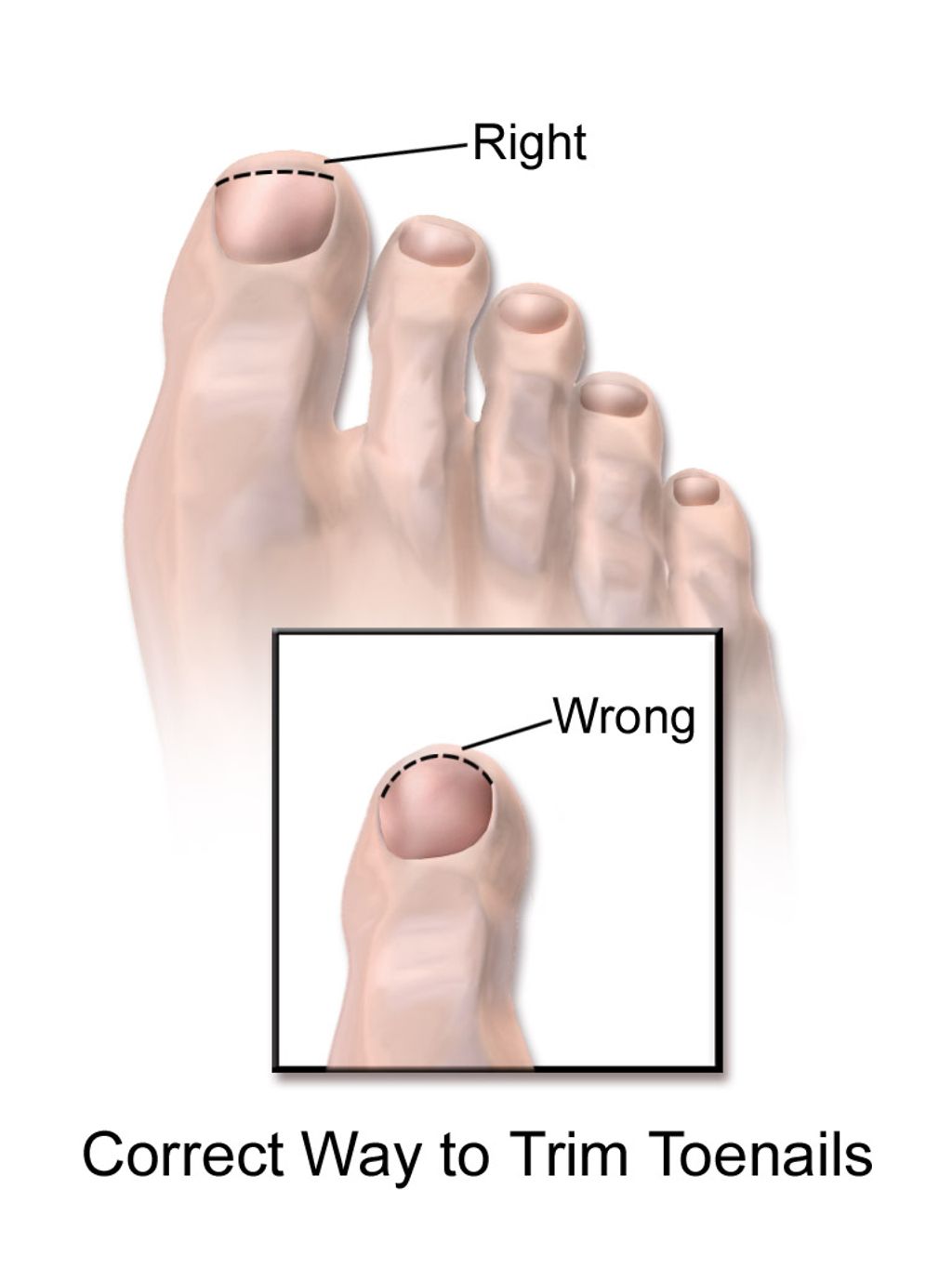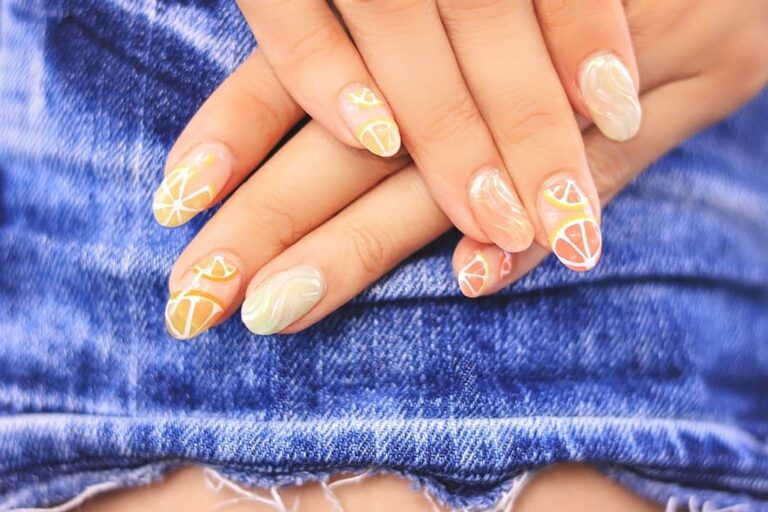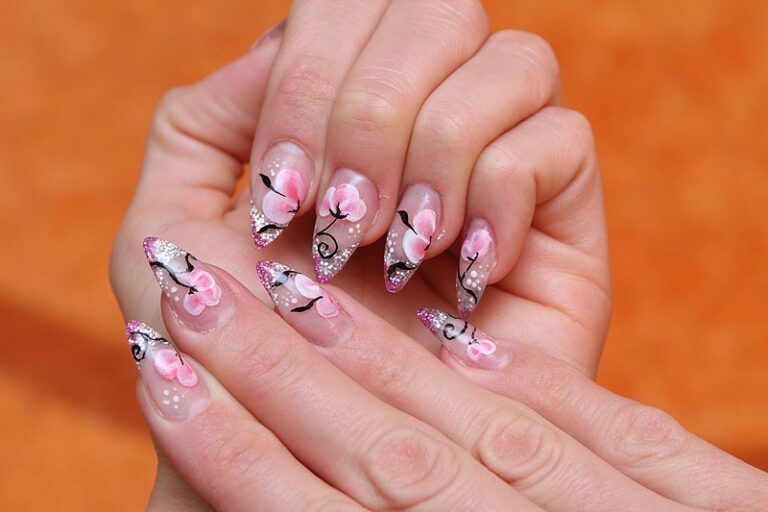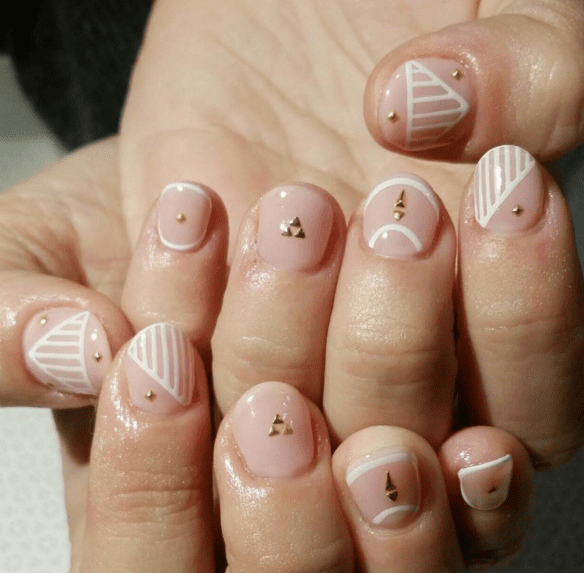“Breakdown: Unraveling the Reasons Why Nails Break”
Deprecated: mb_convert_encoding(): Handling HTML entities via mbstring is deprecated; use htmlspecialchars, htmlentities, or mb_encode_numericentity/mb_decode_numericentity instead in /home/u654140373/domains/nailinspire.com/public_html/wp-content/plugins/kadence-pro/dist/elements/elements-init.php on line 1267
Deprecated: Function utf8_decode() is deprecated in /home/u654140373/domains/nailinspire.com/public_html/wp-content/plugins/kadence-pro/dist/elements/elements-init.php on line 1275
Nails are an essential part of our body, and their health and strength are crucial for our overall well-being. In this article, we will delve into the various factors that contribute to nail breakage, including nail structure, common culprits, nutritional deficiencies, medical conditions, personal care practices, and preventative measures. Understanding these reasons will help us take better care of our nails and maintain their integrity.
Key Takeaways
- Regularly moisturize your nails to prevent brittleness and breakage.
- Incorporate a balanced diet rich in vitamins and minerals for stronger, healthier nails.
- Be cautious of harsh chemicals and excessive water exposure that can weaken nails.
- Practice safe manicure and pedicure techniques to avoid damage to the nails and surrounding skin.
- Seek professional advice if you notice persistent changes in your nail health.
Understanding Nail Structure and Growth

The Anatomy of a Nail
To understand why nails break, it’s essential to start with their anatomy. A nail is composed of several parts, with the nail plate being the most visible. This hard, protective layer is made of keratin, a type of protein that’s also found in skin and hair. Beneath the nail plate lies the nail bed, which provides nourishment and support.
The nail matrix, located at the base of the nail under the cuticle, is where nail growth begins. Cells in the matrix multiply and harden to form the new nail plate that pushes the old one forward. The cuticle seals this area, protecting it from infections. Nails also have lateral folds on the sides, which help anchor them to the fingers and toes.
Healthy nails are smooth, without ridges or grooves, and have a consistent color. Changes in nail structure can indicate various health issues or nutritional deficiencies. Regular observation of your nails can provide early clues to systemic problems.
Tip: Keeping the cuticle intact and moisturized is crucial for protecting the nail matrix and ensuring healthy nail growth.
Nail Growth Cycle
The nail growth cycle is a continuous process that is influenced by various factors such as age, health, and environment. Nails grow from a deep layer of living cells in the nail root, which is located under the cuticle. As new cells are produced, older ones are pushed out, harden, and form the visible nail plate.
- On average, nails grow about 0.1 millimetre per day, with growth tending to be slower in colder months and in infants and the elderly. *
- The growth rate of nails can vary from person to person and even from finger to finger. For instance, the nails on your dominant hand often grow faster than those on your non-dominant hand.
- Toenails grow at a slower pace compared to fingernails, usually taking a full year to grow from base to tip.
Keeping nails well-moisturized and avoiding harsh chemicals can help maintain a healthy growth cycle and prevent brittleness.
Factors Affecting Nail Strength
The strength and resilience of our nails are influenced by a variety of factors, both internal and external. Internally, genetics play a pivotal role in determining the natural robustness of our nails. Hormonal fluctuations can also have a significant impact, with changes often leading to weaker nails. Externally, environmental conditions such as extreme temperatures and humidity levels can affect nail strength. Additionally, occupational hazards—such as frequent use of tools or chemicals—can contribute to nail wear and damage.
Certain lifestyle choices, like diet and smoking, can also influence nail health. For instance, a diet lacking in essential nutrients may lead to brittle nails. On the other hand, proper hydration and a balanced diet rich in vitamins and minerals can promote stronger nails. It’s important to consider these factors when looking to improve nail strength and prevent breakage.
Tip: Regularly moisturizing your nails and cuticles can help maintain their strength and flexibility, reducing the likelihood of breakage.
Common Culprits of Nail Breakage

Everyday Wear and Tear
Our nails are subjected to a myriad of daily activities that can contribute to wear and tear. From typing on keyboards to cooking, cleaning, and even opening packaging, the constant use and exposure to various surfaces can lead to micro-traumas. Over time, these small injuries accumulate, weakening the nail structure and increasing the likelihood of breakage.
To mitigate the effects of everyday activities, consider the following tips:
- Keep nails trimmed to a manageable length to reduce leverage points where breaks can occur.
- Wear gloves when performing household chores, especially when using cleaning agents or immersing hands in water.
- Apply a nourishing nail cream or oil regularly to maintain moisture and flexibility in the nails.
Tip: Be mindful of your nails during daily tasks. Simple adjustments to how you use your hands can significantly reduce the risk of nail damage.
Impact of Harsh Chemicals
Exposure to harsh chemicals is a significant factor in nail breakage. Common household and beauty products contain substances that can weaken the nail structure over time. For instance, acetone found in nail polish removers is a potent solvent that can strip away natural oils, leading to dry and brittle nails. Similarly, cleaning agents and detergents often contain alkaline compounds that can erode the nail’s protective layers.
Frequent contact with these chemicals without proper protection can exacerbate nail damage. It’s crucial to minimize direct exposure and to use gloves when handling cleaning products. Here’s a list of common chemicals to be cautious of:
- Acetone
- Formaldehyde
- Toluene
- Phthalates
Tip: Always apply a nourishing nail cream or oil after using harsh chemicals to replenish moisture and maintain nail flexibility.
Water Exposure and Nail Brittleness
Prolonged and frequent contact with water is one of the primary factors leading to nail brittleness. When nails absorb water, they expand and can become softer and more prone to breaking. Upon drying, they contract, which can cause them to become brittle and more susceptible to cracks and splits.
To maintain nail integrity, it is essential to limit the duration and frequency of water exposure. Here are some practical tips:
- Wear gloves when washing dishes or cleaning to minimize direct contact with water.
- Pat nails dry gently after washing hands or bathing, avoiding harsh rubbing.
- Apply a moisturizing cream or oil to your nails and cuticles after water exposure to replenish lost moisture.
Remember, it’s not just the amount of water exposure but also the fluctuation between wet and dry states that contributes to nail brittleness. Consistent care is key to preventing damage.
Nutritional Deficiencies and Nail Health

The Role of Vitamins and Minerals
Vitamins and minerals play a pivotal role in maintaining the health and strength of our nails. Keratin, a protein that is the primary component of nails, requires a range of nutrients to be synthesized effectively. A deficiency in certain vitamins and minerals can lead to brittle, weak, or discolored nails, signaling underlying health issues or nutritional gaps.
Essential nutrients for nail health include:
- Biotin (Vitamin B7): Known for its nail-strengthening properties.
- Vitamin C: Necessary for collagen production, which aids in nail fortification.
- Calcium: Important for nail hardness and growth.
- Iron: Prevents spoon-shaped nails and white spots.
- Zinc: Supports nail tissue growth and repair.
Tip: Consistently including these nutrients in your diet can help prevent nail breakage and promote overall nail health.
It’s important to recognize that while supplements can help, the best source of these nutrients is a balanced diet rich in fruits, vegetables, lean proteins, and whole grains. If you suspect your nails are reflecting a nutritional deficiency, it’s advisable to consult a healthcare professional for personalized advice.
Signs of Nutritional Shortfalls in Nails
Nails can be a telling indicator of our overall health, including the presence of nutritional deficiencies. When the body lacks certain vitamins and minerals, it may manifest in the nails as various signs and symptoms. For instance, a deficiency in iron can lead to brittle nails, while insufficient vitamin E also contributes to this condition. Similarly, a lack of biotin, a nutrient essential for nail strength, can cause nails to become weak and prone to breakage.
Brittle nails, discoloration, and the appearance of grooves or ridges are common indicators that your nails may be suffering from a lack of proper nutrition. These changes are not only cosmetic concerns but can also signify more serious health issues, such as anemia, which may accompany these nail changes.
To maintain healthy nails, it’s crucial to ensure a balanced diet rich in key nutrients. Here’s a quick checklist of nail-friendly nutrients and their sources:
- Biotin: Eggs, nuts, and whole grains
- Iron: Red meat, spinach, and lentils
- Vitamin E: Sunflower seeds, almonds, and spinach
- Calcium: Dairy products, leafy greens, and tofu
- Zinc: Meat, shellfish, and legumes
Tip: If you notice persistent changes in your nails, it’s advisable to consult a healthcare professional to rule out any underlying conditions.
Dietary Changes for Stronger Nails
When aiming to improve nail strength through dietary changes, it’s essential to focus on a balanced intake of nutrients. Incorporating foods rich in iron, zinc, and calcium can significantly support the strength and health of your nails. Additionally, maintaining a diet that includes a healthy balance of nutrients is crucial for promoting nail growth and preventing brittleness. Ensuring the consumption of these essential nutrients can lead to noticeable improvements in nail strength and resilience. Remember, a well-rounded diet is key to achieving stronger and healthier nails.
Medical Conditions That Affect Nail Integrity

Thyroid Disorders and Nail Changes
Thyroid disorders can have a significant impact on nail health. Changes in nail texture and growth patterns are common indicators of thyroid problems. Brittle, dry, and thick nails with ridges, along with changes in growth speed and curvature, may signal an underlying thyroid condition. Additionally, deep lines on the palms and other less common conditions such as leukonychia and striped nails can also be associated with thyroid issues. It’s important to pay attention to these signs and consult a healthcare professional for proper evaluation and management.
Thyroid disorders can manifest in various ways, affecting not only the nails but also other aspects of health. Proper diagnosis and treatment are crucial for addressing thyroid-related nail changes and preventing further complications.
If you suspect thyroid-related nail issues, consider seeking medical advice promptly. Early detection and intervention can lead to better outcomes and improved nail health.
Important Tip: Regular monitoring of nail health and being aware of changes can help in identifying potential thyroid-related issues.
Fungal Infections and Their Impact
Fungal infections can have a significant impact on the appearance and strength of nails. Changes in nail appearance, such as discoloration, thickening, and distortion, are common symptoms of fungal nail infections. These infections are often caused by fungi called dermatophytes, and in some cases, mold or yeast. It’s important to recognize the signs of fungal nail infections and seek appropriate treatment to maintain nail health and integrity. If left untreated, fungal infections can lead to persistent nail damage and discomfort. Seeking professional advice for proper diagnosis and treatment is crucial for managing fungal nail infections effectively.
Skin Conditions with Nail Manifestations
Certain skin conditions can have a direct impact on the health and appearance of nails. Psoriasis and eczema, for example, are chronic conditions that not only affect the skin but also the nails. These conditions can lead to changes such as pitting, discoloration, and abnormal nail growth.
Psoriatic arthritis, a comorbidity of psoriasis, can further exacerbate nail problems, causing tiny depressions or dents known as pitting. While these manifestations can be distressing, they also serve as important indicators of underlying health issues.
Tip: Regular monitoring of nail changes can help in the early detection of skin conditions and their management.
Nail disorders can also occur in infants and children, with conditions like nail psoriasis and atopic dermatitis affecting their nail health. It’s crucial to recognize these signs early to manage the conditions effectively and prevent further complications.
The Influence of Personal Care Practices

Manicure and Pedicure: Risks and Precautions
When it comes to manicures and pedicures, it’s important to be mindful of the [potential risks](https://parenting.firstcry.com/articles/manicure-pedicure-while-pregnant-whats-good-and-whats-not/) involved. Nail technicians and clients should take certain precautions to ensure [cleanliness and avoid potential risks](https://thegrio.com/2023/12/22/safety-health-tips-nail-salon-visit/), ranging from infection to injury. It’s crucial to refrain from utilizing your nails as tools to prevent potential harm and breakage. Additionally, proper cleaning of the basin is essential to avoid contracting infections. Implementing these precautions can help maintain the health and integrity of your nails.
Choosing the Right Nail Care Products
Selecting the appropriate nail care products is essential for maintaining the health and appearance of your nails. The market is flooded with a variety of options, each promising to deliver the best results. However, it’s important to look beyond the marketing and understand the ingredients and formulations that are beneficial for your nails.
When choosing nail care products, consider the following:
- The type of product (e.g., moisturizer, strengthener, cuticle oil)
- The ingredients list, avoiding harsh chemicals like formaldehyde
- The compatibility with your nail type (e.g., brittle, thin, or strong)
- User reviews and recommendations
Tip: Always perform a patch test with a new product to ensure you do not have an allergic reaction.
Remember, what works for one person may not work for another. It’s crucial to find products that suit your specific nail needs. For instance, if you have brittle nails, look for a strengthener that contains keratin or biotin. If you’re prone to dryness, a hydrating cuticle oil can be beneficial.
The Debate Over Artificial Nails
The use of artificial nails has become a widespread trend, but it’s not without controversy. Proponents argue that artificial nails can enhance the aesthetic appeal and offer a durable alternative to natural nails. Critics, however, point to the potential damage that these products can cause to the nail bed over time.
When considering artificial nails, it’s important to weigh the pros and cons. Here are some key points to consider:
- Durability vs. Natural Nail Health
- Maintenance Requirements
- Risk of Infection
- Impact on Nail Growth
Tip: Always have artificial nails applied and removed by a professional to minimize the risk of damage to your natural nails.
Ultimately, the decision to use artificial nails should be made with careful consideration of one’s personal nail health and lifestyle needs. It’s essential to follow best practices for nail care to maintain the integrity of both artificial and natural nails.
Preventative Measures and Nail Maintenance

Daily Routines for Nail Strength
Incorporating a daily routine for nail care is essential for maintaining strong and healthy nails. Moisturizing is a cornerstone of nail health; applying oils such as flaxseed or coconut oil can significantly nourish your nails. These oils are packed with beneficial nutrients that promote hydration and flexibility, reducing the likelihood of breakage.
A balanced diet is also crucial for nail strength. Ensuring you consume enough biotin and keratin-rich foods can support healthy nail growth and fortify their structure. Biotin supplements are often recommended for those looking to improve their nail’s resilience.
Remember: Consistency is key. Here’s a simple daily routine to follow:
- Use a cuticle oil every day to keep the nail bed and surrounding skin supple.
- File your nails with a soft nail file to prevent splits and snags.
- Wear gloves when doing household chores to protect your nails from harsh chemicals and water exposure.
Tip: Give your nails a break from polish and artificial nails periodically to allow them to breathe and recover from any potential damage.
Protective Gear and Best Practices
When it comes to nail care professionals, using protective gear is essential for maintaining nail health and safety. This includes gloves, face masks, eye protection, aprons or lab coats, closed-toe shoes, nail dust extraction systems, hand sanitizer, and disinfectants. Implementing these measures helps to minimize exposure to harmful chemicals and pathogens, ensuring a safer and healthier work environment. Additionally, it is important to regularly inspect and replace worn-out protective gear to maintain its effectiveness. Proper maintenance and use of protective equipment are crucial for preventing nail damage and promoting overall well-being.
When to Seek Professional Help
While many nail issues can be managed with proper home care and preventative measures, certain conditions warrant professional intervention. Persistent symptoms or changes in nail appearance that do not improve with at-home treatments should be evaluated by a healthcare provider. Here are some signs that it’s time to seek professional help:
- Unusual nail discoloration or texture changes
- Pain or swelling around the nails
- Signs of infection, such as redness, warmth, or pus
- Nails that are growing in an abnormal direction or shape
Tip: Early consultation can prevent complications such as chronic infections or more serious underlying health issues.
Remember, your nails are a reflection of your overall health. If you’re experiencing persistent nail problems, it’s essential to consult with a dermatologist or other medical professional who can provide a proper diagnosis and treatment plan.
Taking care of your nails is essential for maintaining their health and beauty. By following simple preventative measures and practicing regular nail maintenance, you can keep your nails looking fabulous. At NAILinspire.com, we provide the ultimate online nail art design library, offering a wide range of inspiration and tips for creating stunning nail designs. Visit our website today to explore our collection and take your nail art to the next level!
Frequently Asked Questions
How can I strengthen my nails?
You can strengthen your nails by maintaining a balanced diet rich in vitamins and minerals, avoiding harsh chemicals, and using protective gear when engaging in activities that may cause nail damage.
Are artificial nails safe for long-term use?
The safety of long-term use of artificial nails is a subject of debate. While some people experience no issues, others may encounter nail damage and infections. It’s important to follow proper application and removal procedures and to give your natural nails time to breathe.
What are the signs of nutritional deficiencies in nails?
Signs of nutritional deficiencies in nails may include brittleness, discoloration, ridges, and slow growth. Consulting a healthcare professional for proper assessment and advice is recommended.
How do thyroid disorders affect nails?
Thyroid disorders can lead to changes in nail texture, thickness, and growth. Brittle, dry, or peeling nails may indicate an underlying thyroid condition and should be evaluated by a medical professional.
Can fungal infections cause nail breakage?
Yes, fungal infections can weaken the structure of the nail, leading to breakage, discoloration, and thickening. Prompt treatment and proper hygiene practices are essential for managing fungal nail infections.
What are the best nail care practices for preventing breakage?
Best nail care practices include keeping nails clean and dry, using moisturizing products, avoiding excessive filing and buffing, and wearing gloves when performing tasks that may stress the nails.





